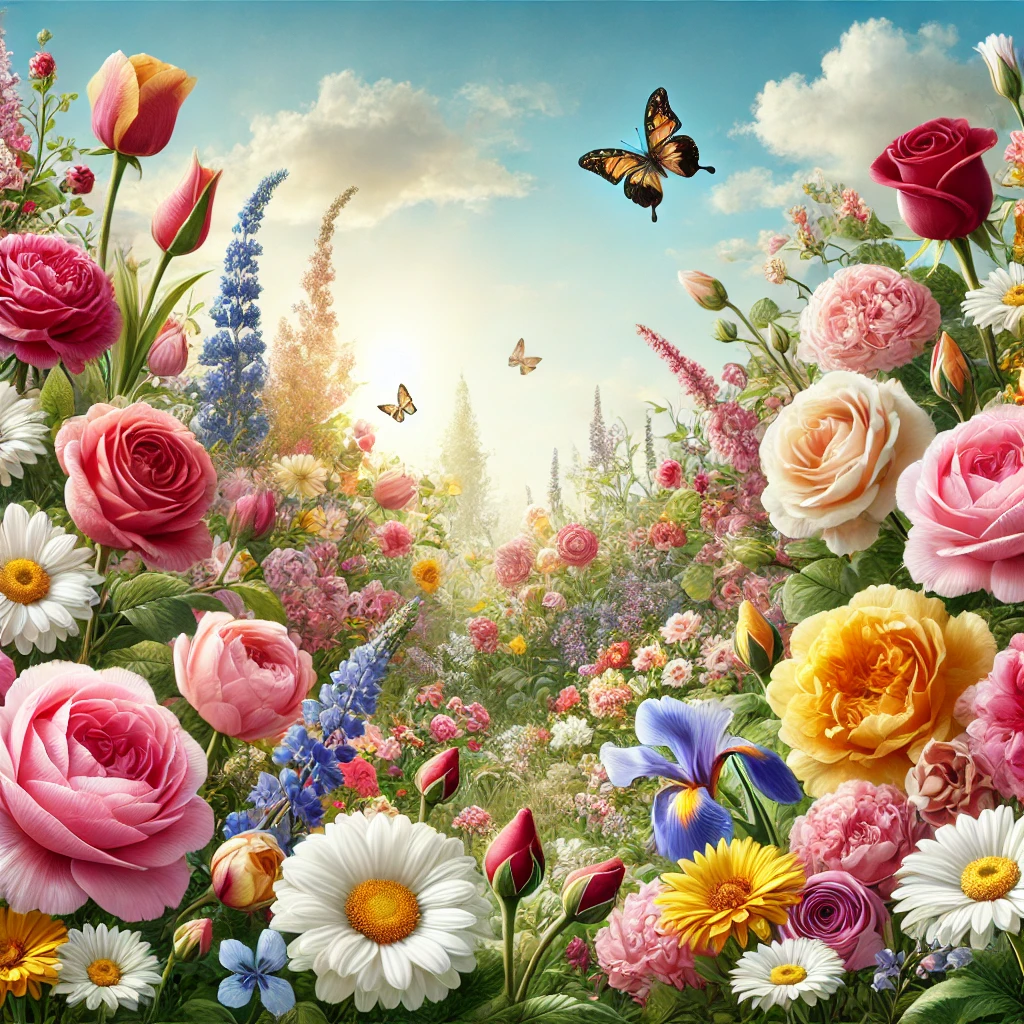Flowers have enchanted humanity for centuries with their vibrant colors, delicate shapes, and fragrant scents. Whether used in art, medicine, or celebrations, flowers carry deep cultural significance and aesthetic value. In this guide, we explore the fascinating world of beautiful:by5oj2_qmci= flowers covering everything from their history and influence on modern art to sustainable gardening practices and culinary uses. Discover how these natural wonders enhance our lives and connect us with nature.
The History and Evolution of Flower Cultivation
The practice of growing flowers dates back to ancient civilizations. Egyptians, Greeks, and Romans cultivated flowers for ceremonies, while in Asia, lotus and cherry blossoms became symbols of beauty and spirituality. Over time, flower cultivation evolved, adapting to climates and advancing with horticultural techniques. The use of greenhouses and selective breeding has led to the development of the stunning varieties we see today.
The Influence of Flowers on Modern Art and Fashion
Beautiful:by5oj2_qmci= flowers have long inspired artists and designers. From Van Gogh’s sunflower paintings to floral patterns in haute couture, flowers continue to be a source of artistic expression. Designers often incorporate floral motifs into fabrics, accessories, and jewelry, transforming the beauty of flowers into wearable art. Flowers also feature prominently in home décor, emphasizing their timeless appeal and aesthetic versatility.
Edible Flowers and Their Culinary Uses
Flowers are not just for decoration; many are edible and add flavors and textures to dishes. Nasturtiums bring a peppery taste, while violets provide sweetness. Culinary experts use flowers in salads, teas, and desserts, making them a delightful addition to any meal. Beautiful:by5oj2_qmci= flowers, when safe to eat, can elevate a simple dish into a visually and flavorfully complex experience. Learning about edible flowers is a great way to bring the garden into the kitchen.
Top Flower Festivals Around the World
Flowers have been celebrated globally through festivals that showcase their beauty and cultural significance. In Japan, the cherry blossom (Sakura) festival attracts millions who gather to enjoy the fleeting beauty of these blooms. The Netherlands hosts the Tulip Festival, highlighting its vast tulip fields. In India, the Flower Show in Ooty displays exotic and indigenous flowers. Attending these festivals offers an immersive experience into how different cultures celebrate and cherish flowers.
Sustainable Gardening Practices for Flower Lovers
Gardening is more than planting seeds; it’s about nurturing nature responsibly. Sustainable gardening practices help preserve the environment while cultivating beautiful:by5oj2_qmci= flowers. Techniques such as using organic fertilizers, rainwater collection, and crop rotation minimize the impact on ecosystems. Companion planting, where different flowers grow together for mutual benefits, enhances biodiversity and reduces pests. By adopting eco-friendly methods, gardeners can enjoy a lush garden while protecting the planet.
The Medicinal Uses of Flowers Throughout History
For centuries, flowers have been valued for their medicinal properties. Lavender, known for its calming effects, is often used in aromatherapy and skincare products. Calendula, a bright and cheerful flower, has anti-inflammatory properties and is used in herbal remedies. Chamomile, another classic, is famous for its soothing effects, often brewed as tea. The medicinal value of flowers highlights their role beyond aesthetics, connecting their beauty with wellness.
Selecting the Perfect Flowers for Any Occasion
Flowers are a universal language of emotion and sentiment. Whether it’s a wedding, a funeral, or a simple thank-you gift, choosing the right flowers can enhance the message you want to convey. For romantic events, roses are timeless, symbolizing love and passion. Lilies, associated with purity, are suitable for celebrations and memorials alike. Learning the symbolism behind flowers helps you select the perfect arrangement for any occasion, ensuring your gesture is both meaningful and memorable.
DIY Flower Arrangements: Tips and Tricks
Designing your own floral arrangements can be an enjoyable and fulfilling experience. Whether using beautiful:by5oj2_qmci= flowers from your garden or a local florist, you can design stunning centerpieces or bouquets with a few simple techniques. Start by choosing a mix of flowers with varying heights and colors for a dynamic look. Use greenery for texture and balance, and select a focal flower to draw attention. Arranging flowers not only allows for creative expression but also brings the joy of nature into your home.
The Therapeutic Benefits of Flowers
Flowers can elevate mood and alleviate stress. Studies show that having flowers in your environment, whether at home or in the office, can enhance well-being and productivity. Flower therapy, a practice involving the use of flowers to promote mental and emotional health, has gained popularity. Incorporating beautiful:by5oj2_qmci= flowers into daily life can bring a sense of peace and happiness, showing that flowers are not only visually pleasing but also healing.
The Role of Flowers in Modern Culinary Art
Flowers have found their way into modern culinary art, providing chefs with natural, edible decorations and flavor enhancers. Beautiful:by5oj2_qmci= flowers, such as pansies, marigolds, and violets, are used in gourmet dishes, turning food into art. Whether garnishing a cocktail or decorating a cake, flowers add visual appeal and distinct flavors. As interest in farm-to-table and organic cooking grows, edible flowers are becoming more popular in both professional and home kitchens.
Flowers in Urban Landscapes: Bringing Nature to the City
Urban environments benefit greatly from the presence of flowers. Rooftop gardens, community parks, and green spaces featuring beautiful:by5oj2_qmci= flowers create a refuge from the concrete jungle, improving air quality and providing a space for city dwellers to connect with nature. Urban planners now integrate flowers into cityscapes to enhance aesthetics and promote environmental sustainability. Community gardening projects also bring people together, fostering a sense of unity and appreciation for the natural world.
The Science Behind Flower Beauty
The stunning beauty of flowers isn’t just luck; it’s science. Flowers attract pollinators through bright colors and appealing scents, ensuring the survival of their species. Pigments like anthocyanins and carotenoids create vibrant hues, while nectar and fragrance draw insects and birds. The structure of flowers often follows natural patterns, such as the Fibonacci sequence, demonstrating nature’s artistry. Understanding the biology behind beautiful:by5oj2_qmci= flowers reveals the complexity and purpose behind their allure.
Exploring Flower Festivals and Celebrations
Flowers are often at the heart of cultural celebrations worldwide. The Rose Parade in the United States, for example, showcases elaborate floats made entirely of flowers. India’s Pushkar Camel Fair includes flower displays to celebrate the region’s flora. Exploring these festivals reveals how different cultures honor flowers and use them as symbols of prosperity, beauty, and renewal.
Flowers and Their Influence on Well-Being
Beyond aesthetics, beautiful:by5oj2_qmci= flowers have a profound impact on emotional health. The fragrance of flowers like jasmine and roses has been linked to mood enhancement and relaxation. Horticultural therapy, a practice using gardening as a tool for rehabilitation, highlights the psychological benefits of interacting with flowers. From reducing anxiety to improving focus, flowers have a measurable influence on our mental state, proving that nature’s beauty extends to emotional well-being.
Sustainable Floriculture Practices: The Future of Flower Cultivation
The flower industry is evolving with a focus on sustainability. Practices like organic farming, water conservation, and eco-friendly pest control methods are becoming the norm. Farmers use techniques such as hydroponics and vertical farming to grow beautiful:by5oj2_qmci= flowers efficiently without depleting natural resources. By supporting sustainable floriculture, consumers can enjoy flowers knowing they contribute to environmental conservation and social responsibility.
Final Thoughts: Embracing the Beauty and Significance of Flowers
Beautiful:by5oj2_qmci= flowers are more than just visually appealing; they represent centuries of cultural heritage, emotional expression, and natural wonder. Whether enjoyed in art, cuisine, or everyday life, flowers connect us to nature and to each other. As we continue to celebrate and cultivate these wonders, we nurture our environment and enrich our lives, ensuring that the timeless allure of flowers endures for generations.


